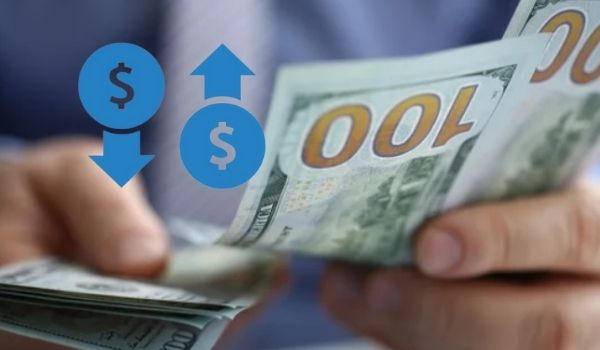The 180 currencies in the world as recognized by the United Nations do have either direct or indirect quotes for USD, lest the countries will not be able to have international trade and transactions. About 9 countries have multiple currencies and 13 countries do not have their own currency but use either USD, Euro, or Australian dollar. So, is the dollar dominance on the wane?
August 15th is Independence Day for India and few other countries. But it was great independence for the US as the country freed itself from the obligation of exchanging gold with the dollar at 1 gold ounce for every 35 dollars. Since then the journey has been a roller-coaster not only for USD but for most other currencies as well. Dr.Kishore NK, Economist, Corporate Finance Professional explains.
The Journey of US dollars
Until the year 1971, the fiat currencies enjoyed their strength as they could be exchanged for gold as the US guaranteed that gold could be exchanged for dollars at all times. Thus, every currency was indirectly exchangeable with dollars.
Later as the US government could not support its public expenditure and could not continue underwriting the gold-dollar exchange system, the US government suspended the gold to dollar exchange system in the year 1971. Instead, the US government facilitated the direct exchange of almost all the currencies with the USD.
As the gold backing was indirectly waived off, all the countries found it easy to manipulate the volumes of their currencies in and outside their countries.
The increased supply of their currencies helped countries to achieve higher growth. However, the growth was on the premise that their currencies can be exchanged with dollars at a given exchange rate.
For the US to continue to exchange USD with any and every other currency, the US has to buy goods and services from other countries and pay for the purchases in USD, thus supplying USD to the world.
This creates and causes continuing current account deficit for the US and has the threat of glut of USD in global circulation and resultantly weak exchange for USD. Thus, eternally supplying USD to the world has both advantages and disadvantages for the US. This paradox was exposed by Dr. Robert Triffin and the paradox was named after him as ‘Triffin Paradox’.
The rise in interest rates and yields in the US are less attractive
The rise in interest rates and yields in the US are less attractive than those in other countries and therefore USD should be depreciating against other currencies. But the trend has not been so and it has actually been very uncertain with no hint that the USD may lose its hegemony over other currencies.
The exchange rates are not in tandem and have mixed reactions and positions. Surprisingly, every uncertain exchange rate movement welcomes discussion of the exchange rate system and the historical journey of the dollar.
For instance, in July 2021 USD gained 3% which is one of its best performances in the past 4.5 years. Yen was at 102/$ in January 2021 but has depreciated to 111.5/$ in July 2021.
While Indian Rupee stood at 72.39/$ in the last week of February 2021 but has depreciated to 75.44/$ by 4th week of April 2021 and has recovered to 73.91/$ by 3rd week of August 2021. Correspondingly, Euro stood at $1.233 in January 2021 but has depreciated to $ 1.17 by 1st April 2021 and after some recovery has reverted to $ 1.16 by 3rd week of August 2021.
Thus, with every cycle passing by and the US supplying more of its currency – USD to the world, the confidence in USD should wane. But should that happen, the global economy may shatter as the majority of global trade, funding supports, exchange systems, and rates are still dependent on USD and may continue to do so into the decades to come.
Is the Dollar Dominance Dooming?
Now, for the question, if the dollar dominance is dooming, the answer is a certain ‘big no’.
More economists also share the opinion of Dr. Kishore. According to IMF–
Despite major structural shifts in the international monetary system over the past six decades, the US dollar remains the dominant international reserve currency. As our Chart of the Week shows, any changes to the US dollar’s status are likely to emerge in the long run.

Despite major structural shifts in the international monetary system over the past six decades, the US dollar remains the dominant international reserve currency. As our Chart of the Week shows, any changes to the US dollar’s status are likely to emerge in the long run.
Disclaimer: Dr.Kishore is an economist and a corporate finance professional. He is serving as a CFO for an infrastructure group situated in Hyderabad. The views expressed are those of the author but do not reflect those of this publishing house or the organization/s he is or was associated with.

Disclaimer: Dr.Kishore is an economist and a corporate finance professional. He is serving as a CFO for an infrastructure group situated in Hyderabad. The views expressed are those of the author but do not reflect those of this publishing house or the organization/s he is or was associated with.


